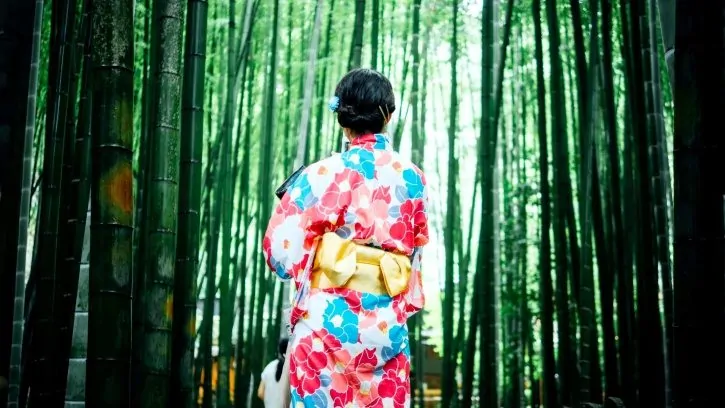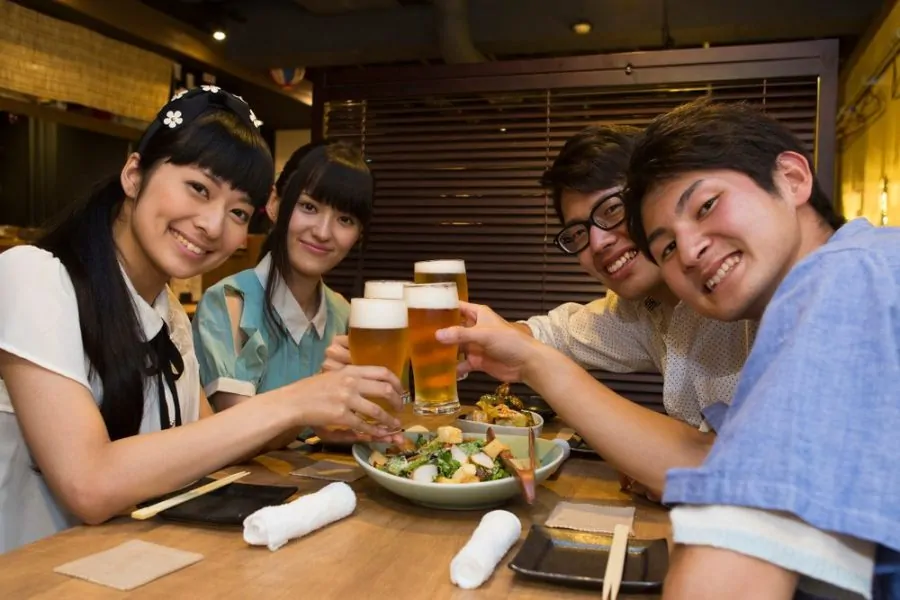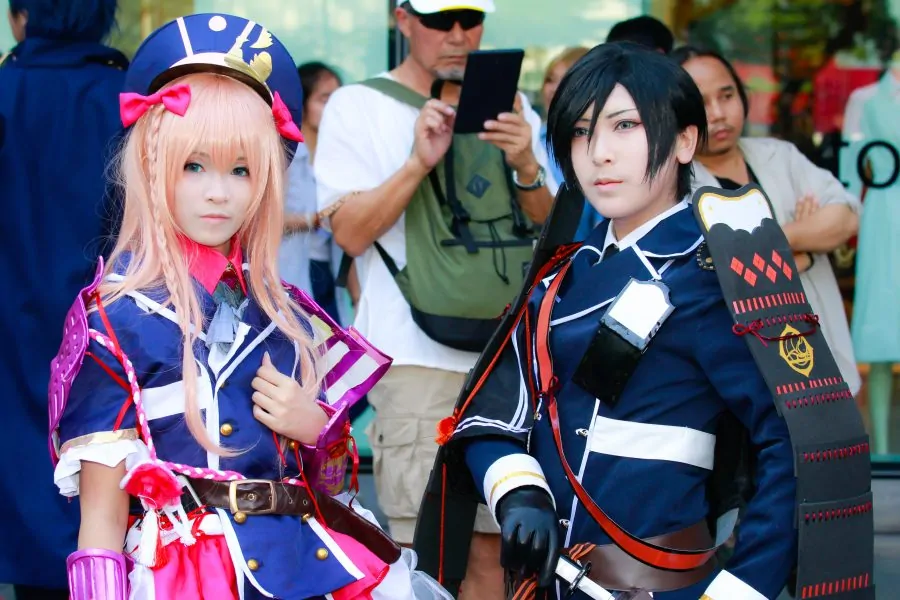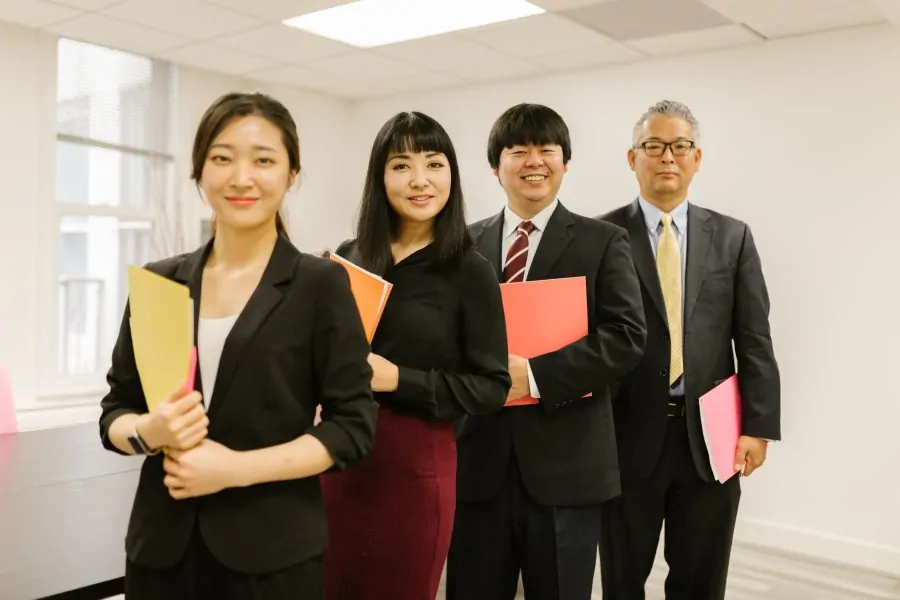In any language, there are ways to show respect for others. In the Japanese language, this is done by using honorifics. If you have ever watched Japanese animation movies in their original voices, surely you noticed that characters often get Japanese suffixes like ¨san¨ or ¨chan¨ attached to their name. If you were wondering, those are Japanese honorifics, each with a specific use.
In this article, we will explore the different Japanese honorifics and why the Japanese use them. We will also discuss their importance in Japanese culture and see when it is appropriate (and inappropriate) to use these suffixes in various situations, not only in polite speech but also in everyday speech. Let’s get started!
6 Most Common Japanese Honorifics
1 – San – さん
San is usually translated as Mr or Mrs. It is the most common Japanese honorific and can be used to address both male and female adults.
Like mister and misses, san is used when you do not know the person very well or when you want to show respect for someone who is not a close friend. For example, if you meet a new colleague at work, you would refer to them as ¨Tanaka-san¨.
2 – Sama – 様
Sama is a more formal and polite version of san. It is used to show great respect for someone who is of high rank and has authority. It is also used when talking to customers or clients.
Some people, like members of a royal family, will have the suffix “sama” attached to their title, whether they are children or adults. For example, the Emperor of Japan is called “ô-sama” (ô is a title that means emperor in Japanese).
3 – Kun – くん
Kun is the suffix you would attach to the name of young boys. Anyone can use this honorific regardless of gender or age to refer a boy with endearment. For example, you could call the ten years old son of your neighbor “Yamada-kun.”
Although there is a company, young women can be called using the Japanese suffix “kun” by their superiors.
4 – Chan – ちゃん
Chan is similar to kun and is used to show endearment towards young girls. It can also be used as a term of affection for someone you are in a romantic relationship with or even for a cute pet.
Like kun, chan can be used by anyone regardless of gender or age. It gives names a kind of cuteness people often associate with little girls.
5 – Sensei – 先生
Sensei is used to refer to someone who has a profession or occupation that requires high levels of skill. This Japanese honorific is usually translated as ¨teacher¨ or “professor” but can be used for lawyers, doctors, dentists, and even novelists.
It can also be used when talking about someone who has achieved a certain level of mastery in an activity like sports or martial arts.
For example, if you are taking a cooking class from a Michelin-starred chef, you would refer to them as ¨sensei¨.
6 – Senpai – 先輩
Senpai is used to refer to someone who has seniority over you in a given environment. This can be in rank at work or simply because they are older than you. In Japan, the “senpai” has an image of a mentor who would guide his/her “kohai,” meaning his/her juniors.
This honorific is also commonly used in school settings, where a first-year student would refer to an older student as ¨senpai¨. It can also be used in workplaces, where a new employee would refer to a more experienced colleague as ¨senpai.¨
How to Use Honorifics in Japan
Why Japanese Uses Honorifics
Although it might sound unusual to a foreigner, using honorifics in Japan is very natural. Japanese people use them all the time, both in their professional and personal lives. In fact, in Japanese, it is common to repeat someone’s name again and again when addressing him/her, whereas, in English, we just use the pronoun “you” instead. Take a look at the short conversation below:
– Kotaro-kun, matsuri ni iku? (Kotaro, are you going to the festival?)
– Hai, ikimasu. Honda-san wa? (Yes, I’m going. How about you?)
Kotaro uses Mr. Honda’s name in this conversation when he answers back. We could indeed translate this answer as “Yes, I’m going. How about you, Mr. Honda?” but it is more natural to use “you” in English. Moreover, the Japanese honorifics give us the information we don’t get from the English translation. For instance, we know Kotaro is probably a young boy because of the suffix “kun.”
Using an honorific can show endearment or respect, depending on the kind of person concerned. It could also be a title defining someone like “sensei” (professor). Knowing how to use them will allow you to fit better in Japan. However, using them the wrong way might lead to some awkward moments.
How to Use Japanese Honorifics
Most of the time, honorifics are suffixes after people’s last names. Nevertheless, it can also come after first names (especially in the case of children) and other terms such as father (otô-san), uncle (oji-san), prince (ôji-sama), etc…
You can use them to address the person directly or to refer to this person when talking with someone else:
- Ohayo Sakura-chan! : Good morning Sakura! (here, “chan” is used for a little girl)
- Ashita wa Hamada-san ni aimasu: Tomorrow I will meet with Mr. Hamada (here “san” can refer to mister or misses)
There might be cases when “o” or “go” will also be added as an honorific prefix:
Yuki no o-kâ-san wa 30 sai desu: Yuki’s mother is 30.
Finally, honorifics can also be used in written form. Many Japanese envelopes, for example, will have a pre-written “様” (sama) on them, and the name of the letter’s recipient should be added just before it. While some honorifics like ¨kun¨ or ¨chan¨ are written with hiragana (Japanese phonetic lettering system), others like ¨sensei¨ or ¨sama¨ are usually written with kanjis (Chinese characters).
When to Use or Not to Use Honorifics
As we have seen, Japanese honorifics can be used in many situations. But as with anything else, there are also some cases when you should not use them. The most important things that will help you determine which honorific to choose are:
- The age of a person
- The social rank or status of a person
- If you are familiar with a person or not
Generally speaking, you would use polite honorifics when talking to or about someone older than you, who you don’t know, and who has a higher status than you. On the contrary, you might use familiar honorifics (or no honorifics at all) when talking to or about someone younger than you, a close family member, or less experienced than you.
- Always use the honorific “san” when talking to someone who is not close to you, especially if they are older than you. You can’t go wrong with “san” as it is a polite honorific, just like mister and misses. Here are some general tips about using Japanese honorifics:
- When in doubt, it is always better to err on politeness. For example, if you are with a new friend and hesitating between using “san” or not, use it anyway to avoid being rude.
- If someone explicitly tells you it is ok not to use an honorific when addressing him/her, then you can drop the “san.” In Japanese, it is called “yobisute,” meaning you give up on the polite honorific.
- Don’t use polite honorifics when talking about yourself or your family to others. It is a way to show humbleness in Japan.
- When talking with someone you are very familiar with, you don’t have to use polite honorifics.
Japanese honorifics at work
In a work context, Japanese people are usually more formal and use honorifics more often than in other situations. The hierarchy inside your company will decide how you call people or talk about them.
It is best to use their last name followed by “san” to address your co-workers. You can also use “san” to address your superiors. If you have a “mentor figure” at work, you can call this person using his/her last name followed by “senpai.”
When working inside a big company, you might also use the job title specific to your superiors, depending on their position. Here are some of the most used Japanese honorific titles:
- Shachô: CEO
- Buchô: Department Chief
- Kachô: Section Chief
Superiors might call you by your last name without honorific titles because they have authority over you, but you should never forgo the honorific when responding to them. For example, if your department’s chief, Mr. Yamamoto, greets you by saying: “Ohayo John,” you would answer, “Ohayo gozaimasu, Yamamoto-buchô.
Finally, when dealing with customers, it is essential to use the honorific “sama.” You can directly call them “okyaku-sama” (customer in Japanese) or use their last name followed by the honorific suffix “sama” if you know it.
Japanese honorific with family
When talking to or about your own family
When in the presence of family or close friends, you can use casual language and call them by their first name without any polite honorific, just like people do in the West.
For example, if you have a cute little cousin or sister, it is common to attach “kun” or “chan” to their name to show you appreciate them. So saying “Sakura-chan” is a bit like if you were saying, “Cute little Sakura.”
Some Japanese call their older brother and older sister “o-nî-chan” or “o-nê-chan” despite being younger. In this situation, the point is to show your affection, so the age difference is no longer critical.
When talking about your family to other people, you can choose between using honorifics or not. Japanese have different words to say the same thing with variations in the level of politeness.
You will find below a chart with all possible ways of calling family members:
| English | Humble | Polite | Very polite |
| Father | Chichi | O-tô-san | O-tô-sama |
| Mother | Haha | O-kâ-san | O-kâ-sama |
| Big brother | Ani | O-nî-san | O-nî-sama |
| Big sister | Ane | O-nê-san | O-nê-sama |
| Little brother | Otôto | Otôto-san | Otôto-sama |
| Little sister | Imôto | Imôto-san | Imôto-sama |
| Grand-father | Sofu | O-jî-san | O-jî-sama |
| Grand-mother | Sobo | O-bâ-san | O-bâ-sama |
| Husband | Otto | Danna-san | Danna-sama |
| Wife | Tsuma | Oku-san | Oku-sama |
This means you can use words like “haha” or “chichi” when talking about your father and mother to appear humbler, but you can also refer to them as “o-kâ-san” or “o-tô-san.” Children especially tend to call their parents “o-kâ-san” or “o-tô-san,” or even “mama” and “papa.”
When talking to or about other people’s family
Keep in mind that humbleness is only used to refer to your own family. It would be considered rude to use humble terms to talk about other people’s families. Therefore, you can say to someone, “Haha wa 40 sai desu” (My mother is 40), but you shouldn’t say, “Haha wa nan sai desu ka?” (How old is your mother?).
In this case, you could either use a simple, polite form and ask: “O-kâ-san wa nan sai desu ka?” or be extra courteous and say, “O-kâ-sama wa nan sai desu ka?”. Either way, you will make a good impression by being polite.
Conclusion About Japanese Honorific
Honorifics are an essential part of the Japanese language and culture. There are many different honorifics, and each one has a specific purpose. Knowing when and how to use them is essential for mastering this aspect of the language. To speak Japanese properly, you must master its polite forms, especially if you want to work and live in Japan.
It might appear a bit difficult at first, but the basic rules are pretty logical. Just try to remember those 3 points:
- The honorific you use depends on age, status, and familiarity
- When you are faced with people you don’t know well or who are older and higher in the hierarchy, always use their last name with a polite honorific (when in doubt, use “san”).
- When talking with people you are familiar with (good friends, family members), you can relax and drop honorifics or use familiar honorifics of endearment.
We hope this article has helped give you a better understanding of Japanese honorifics. Leave us a comment below if you have any questions or want to share your experiences using honorifics in Japanese!





Leave a Comment